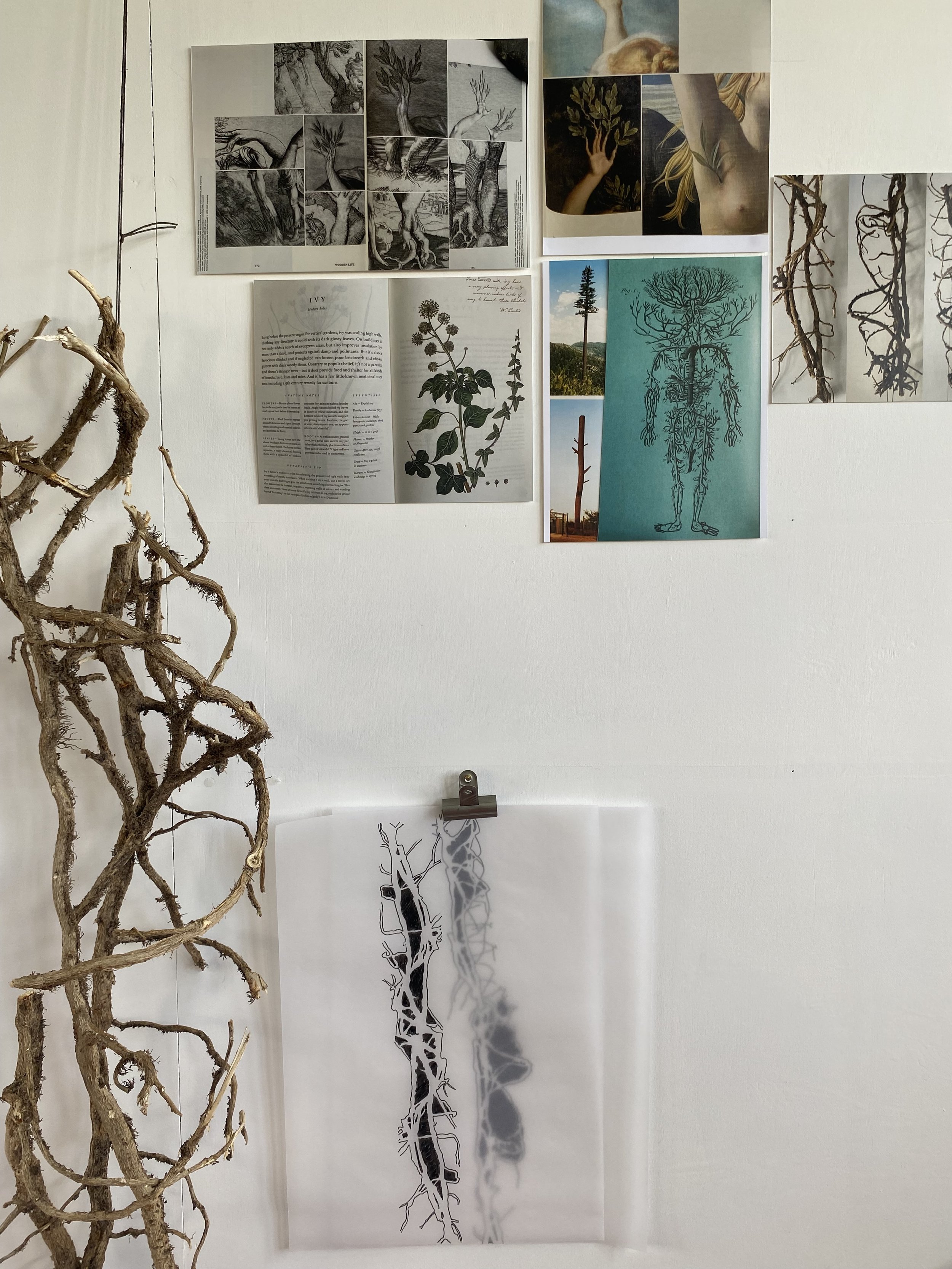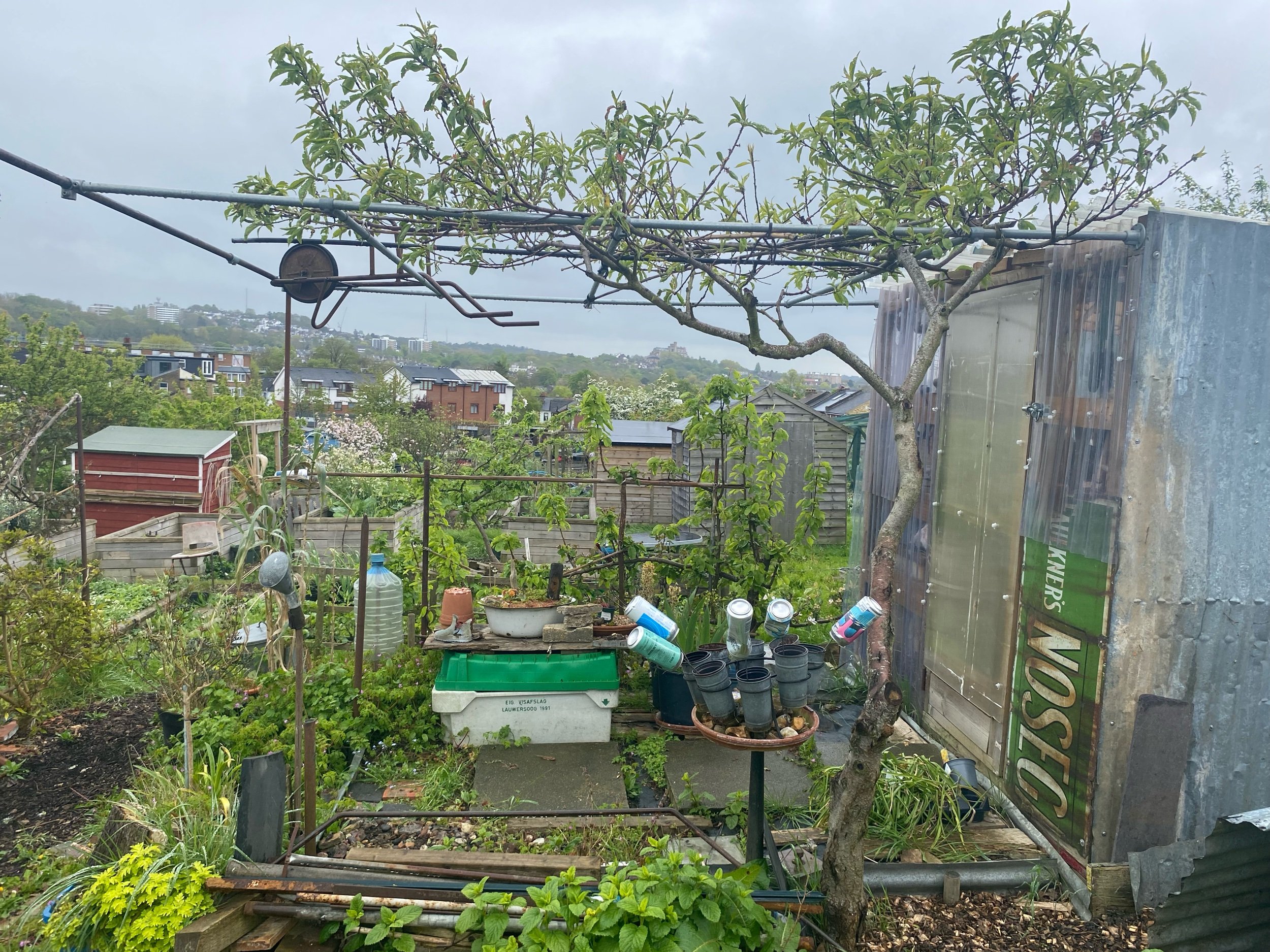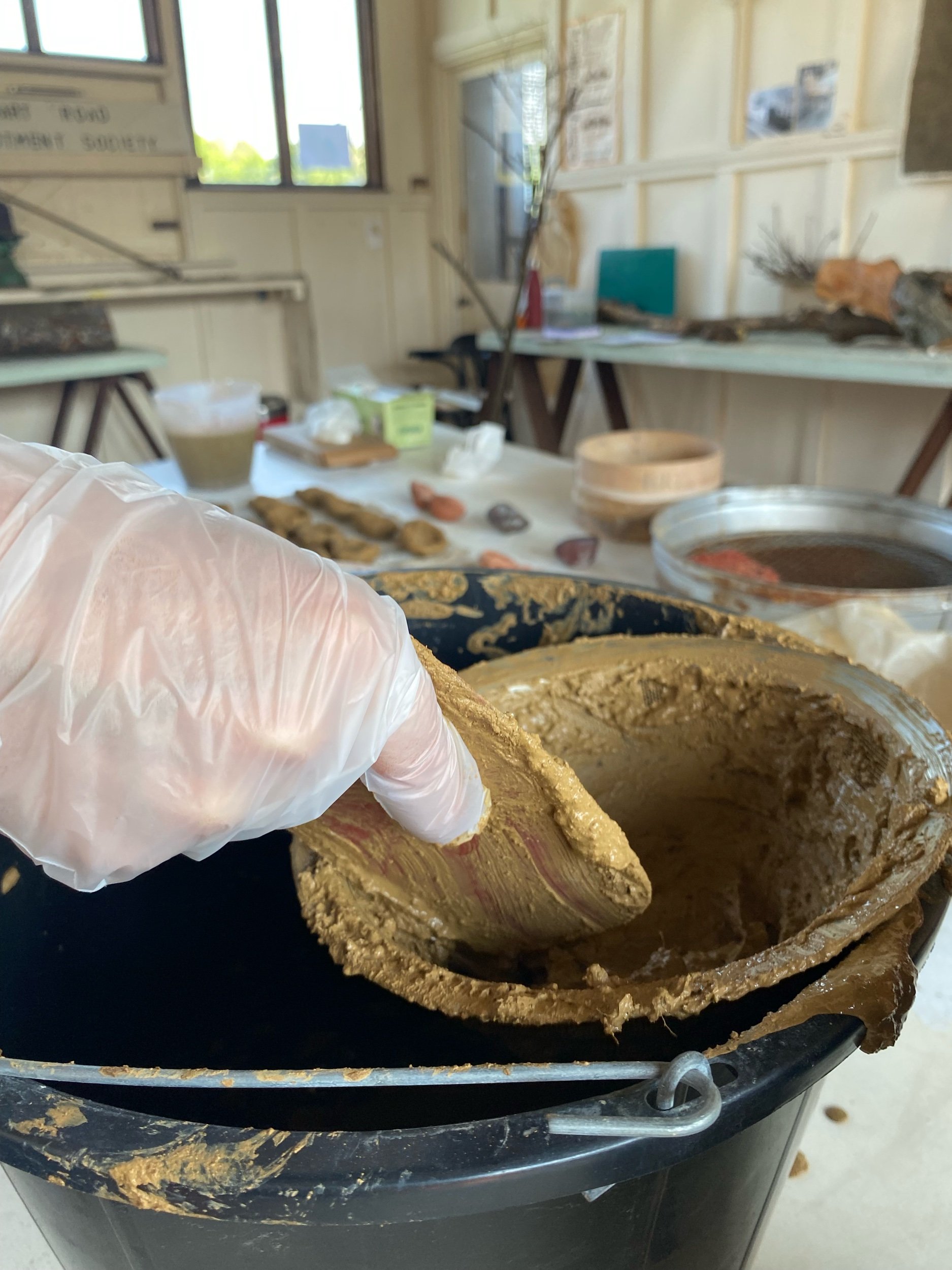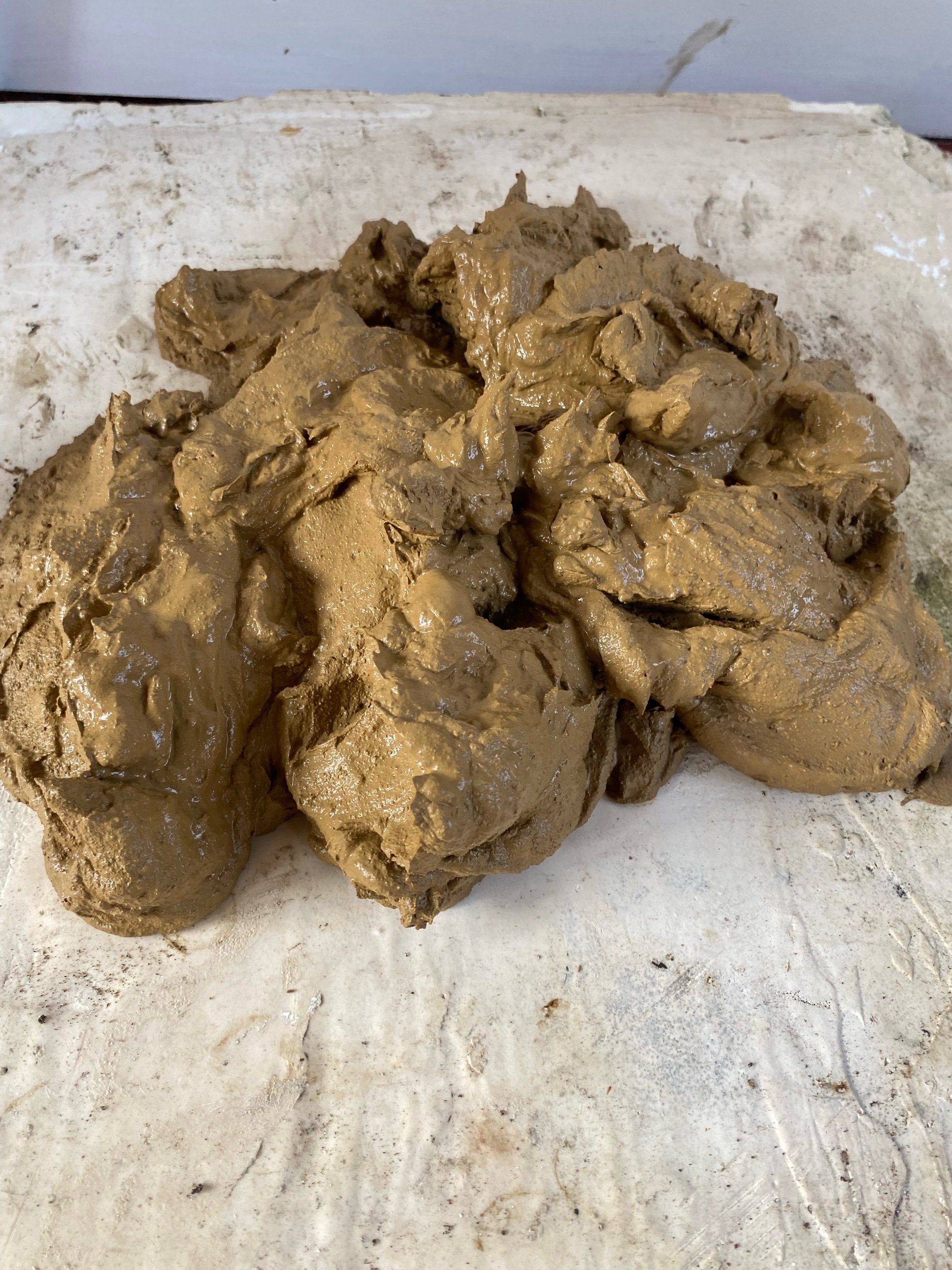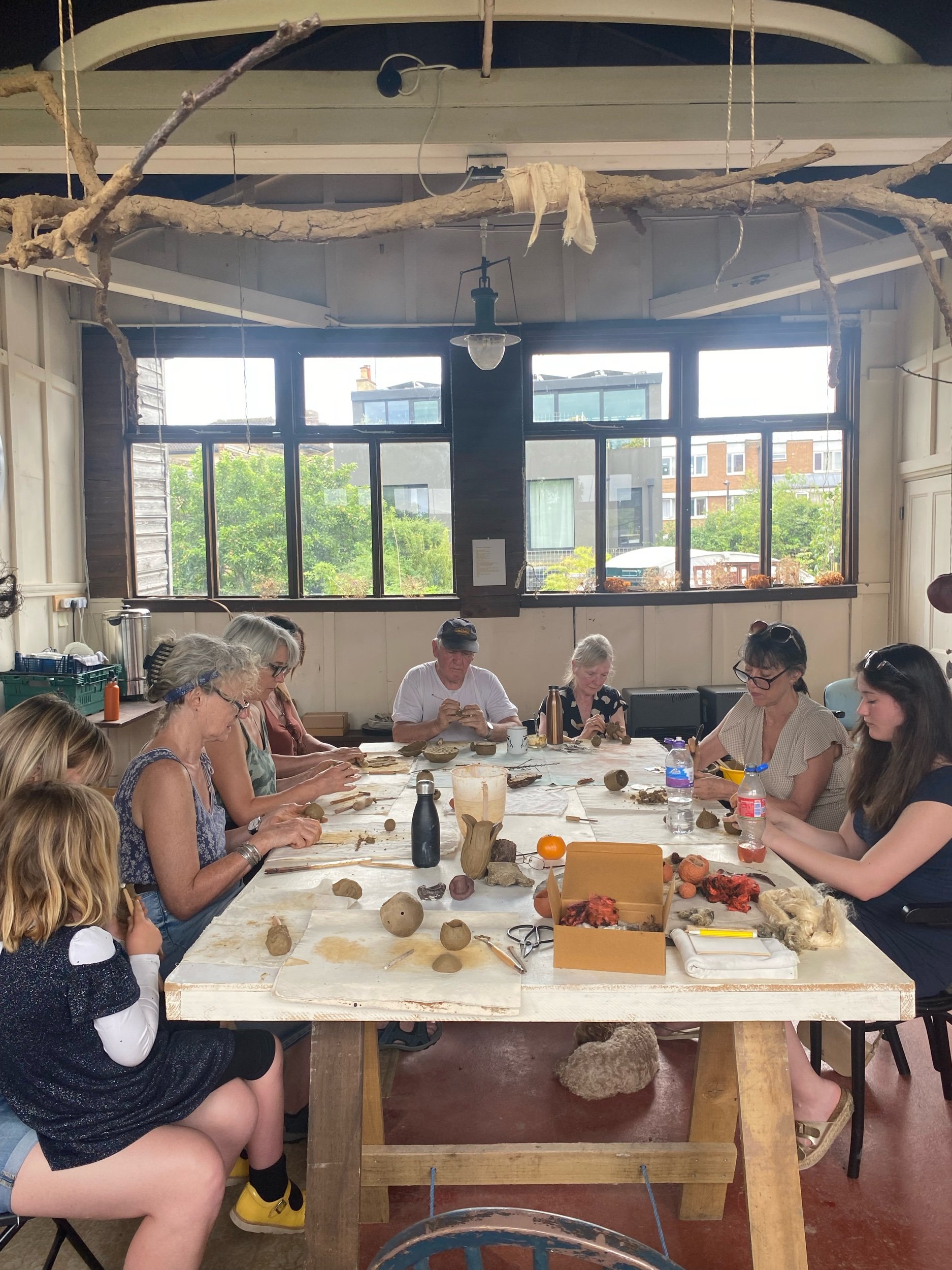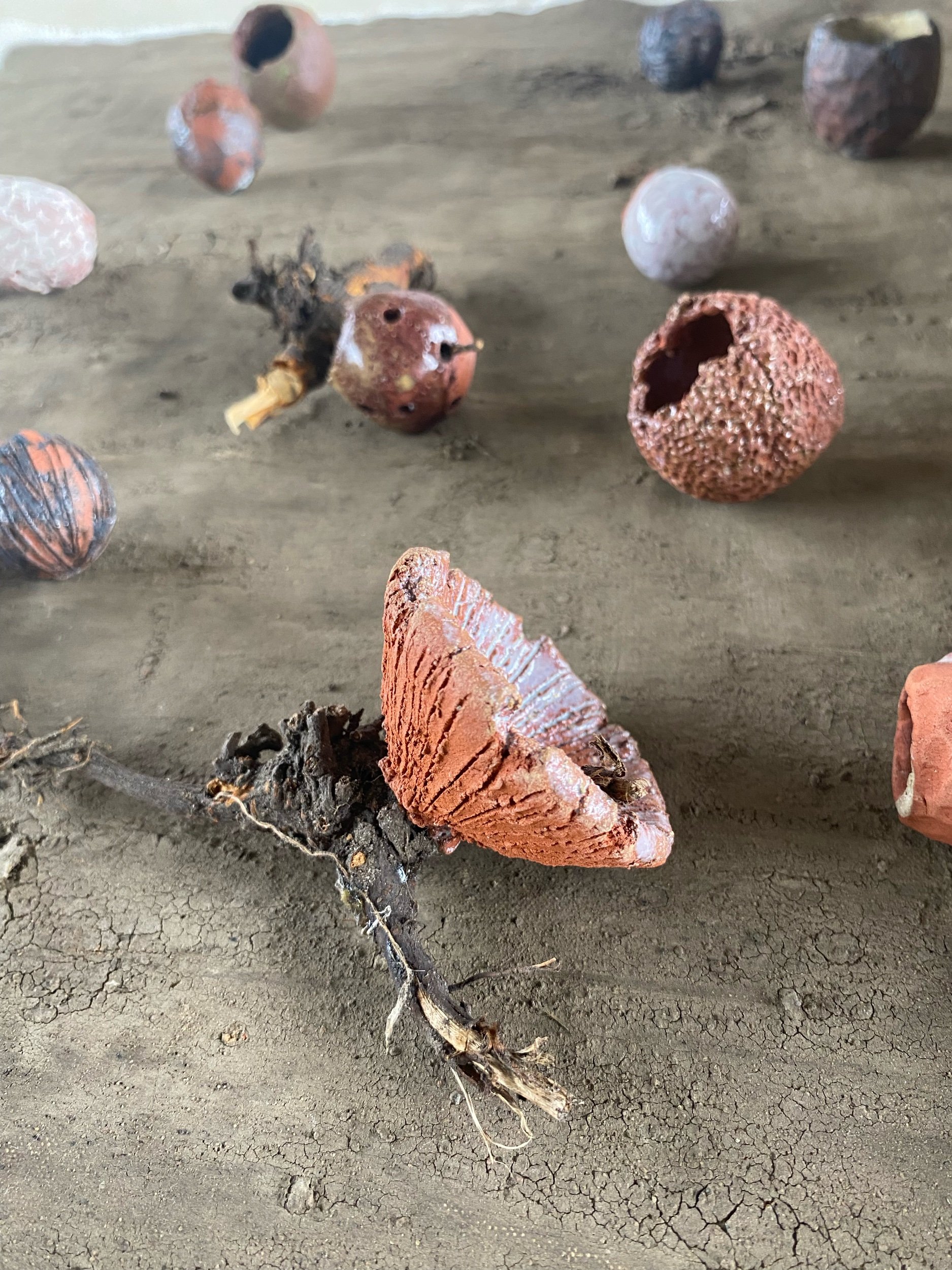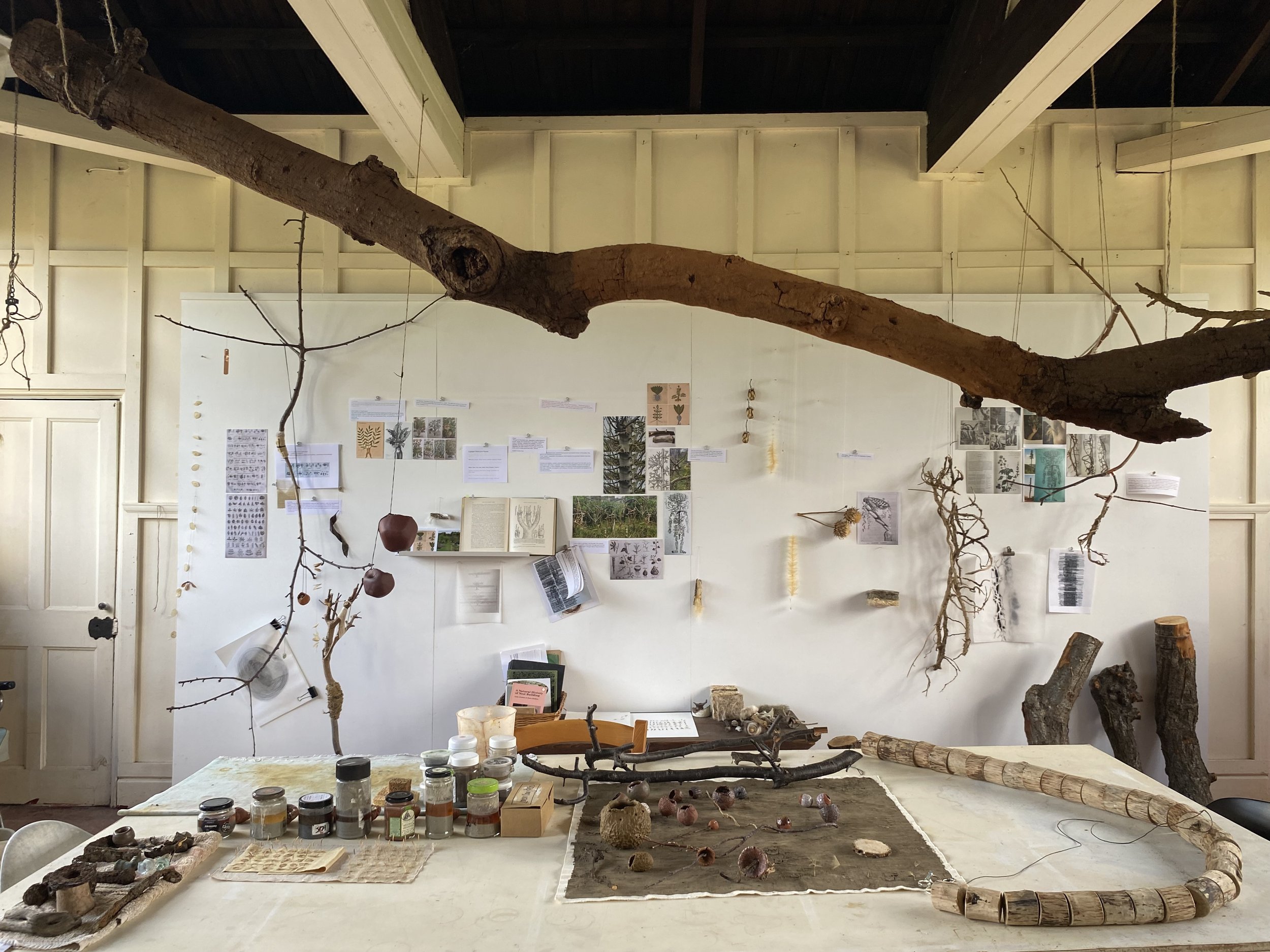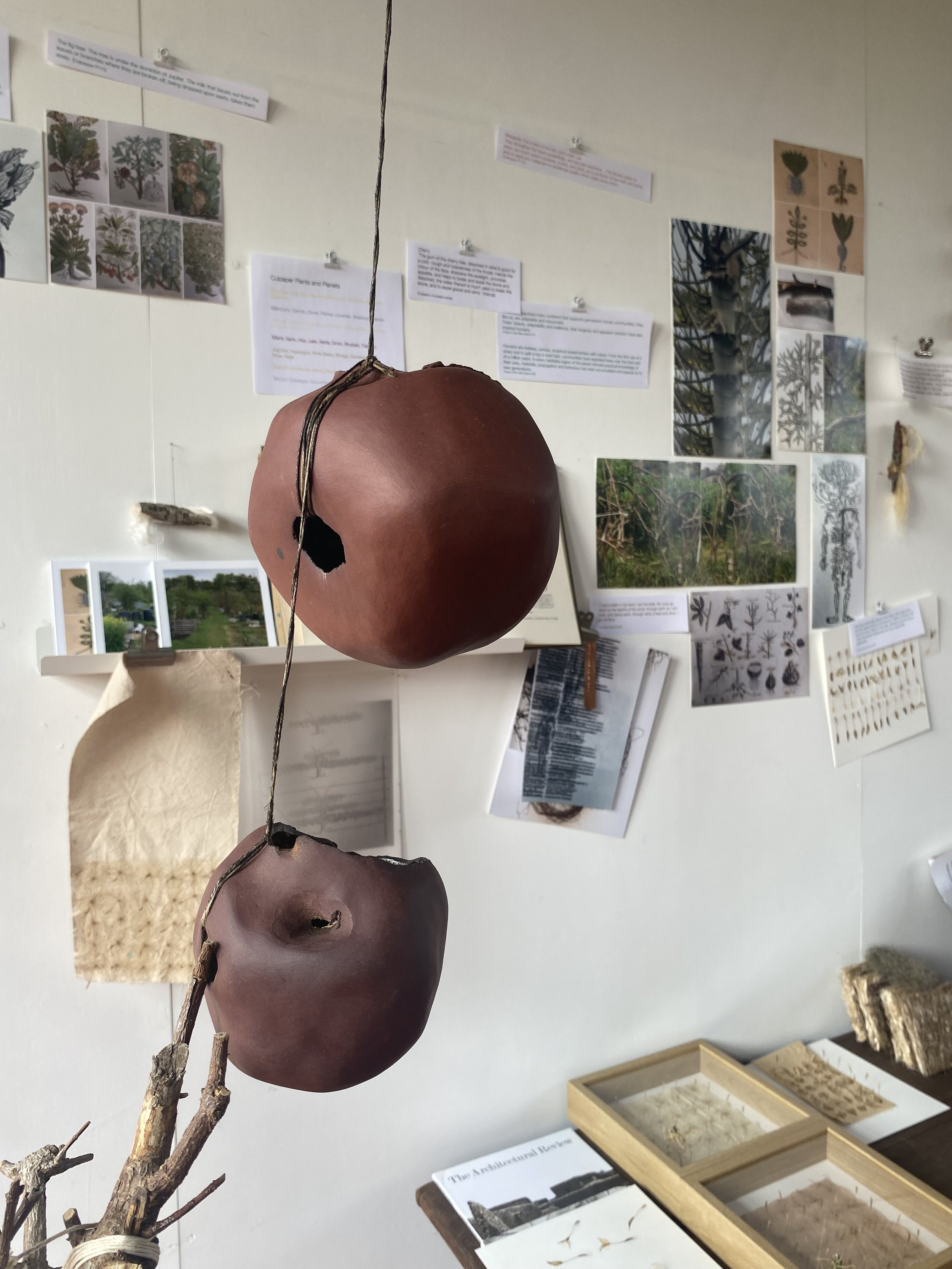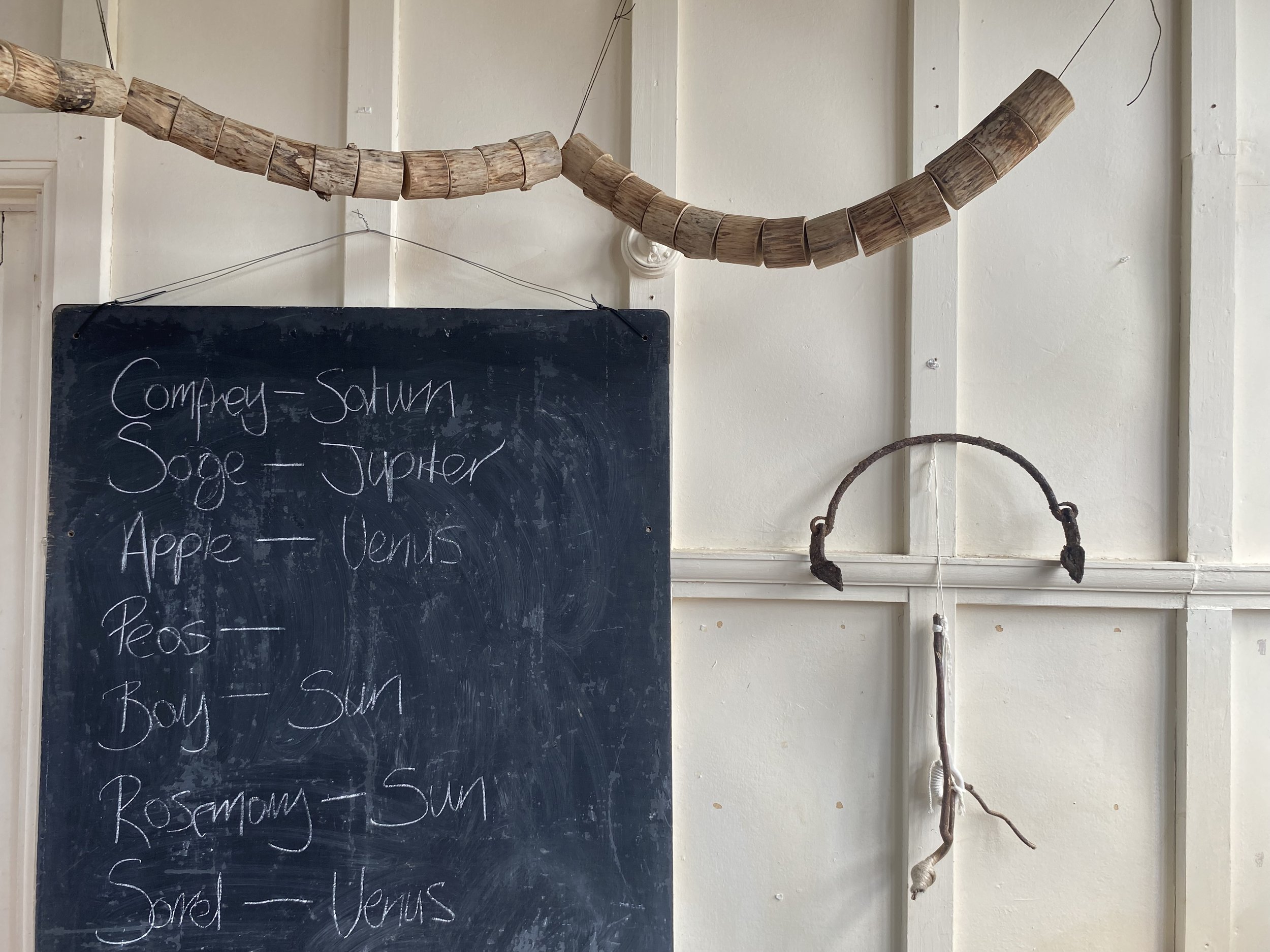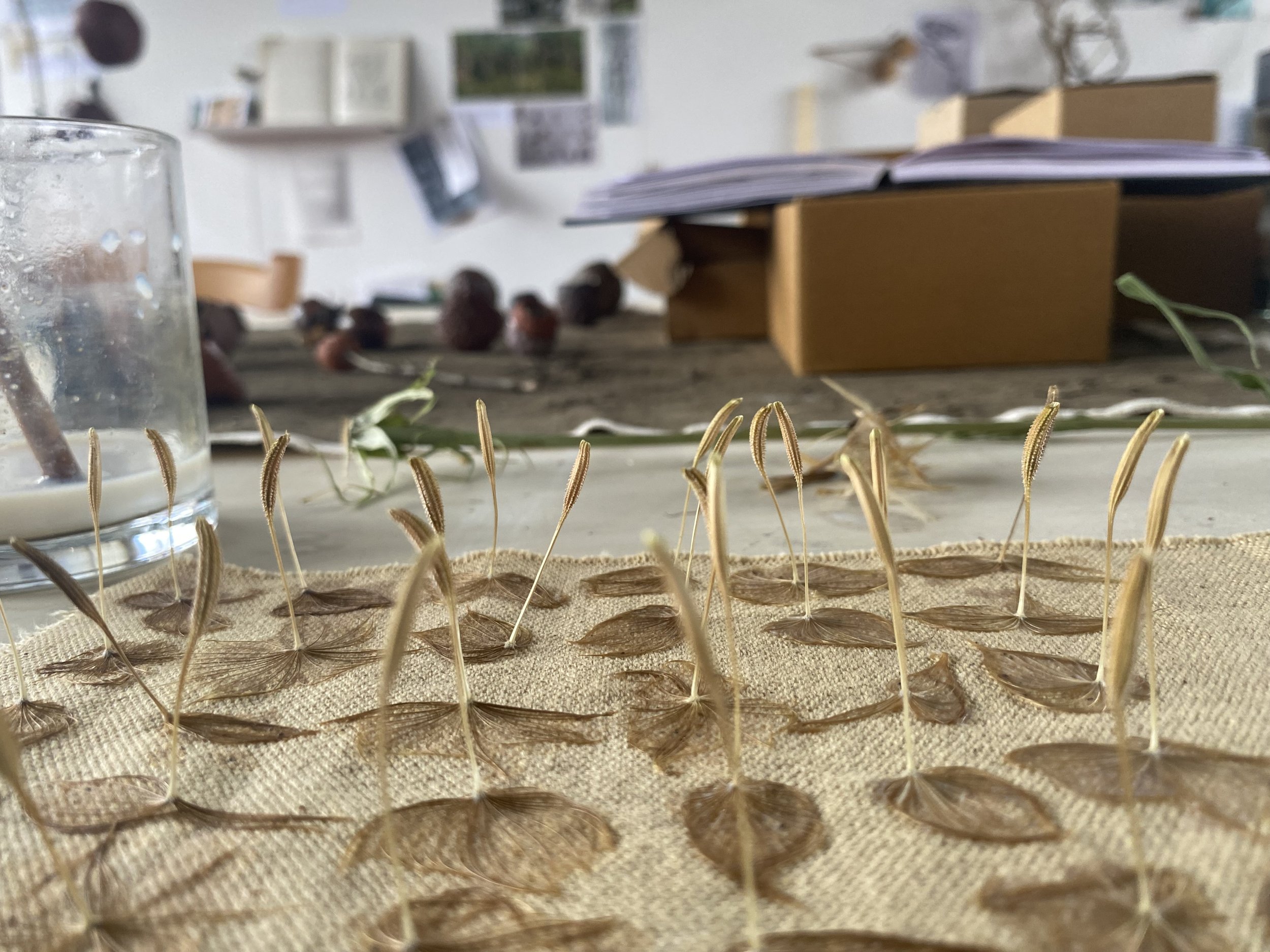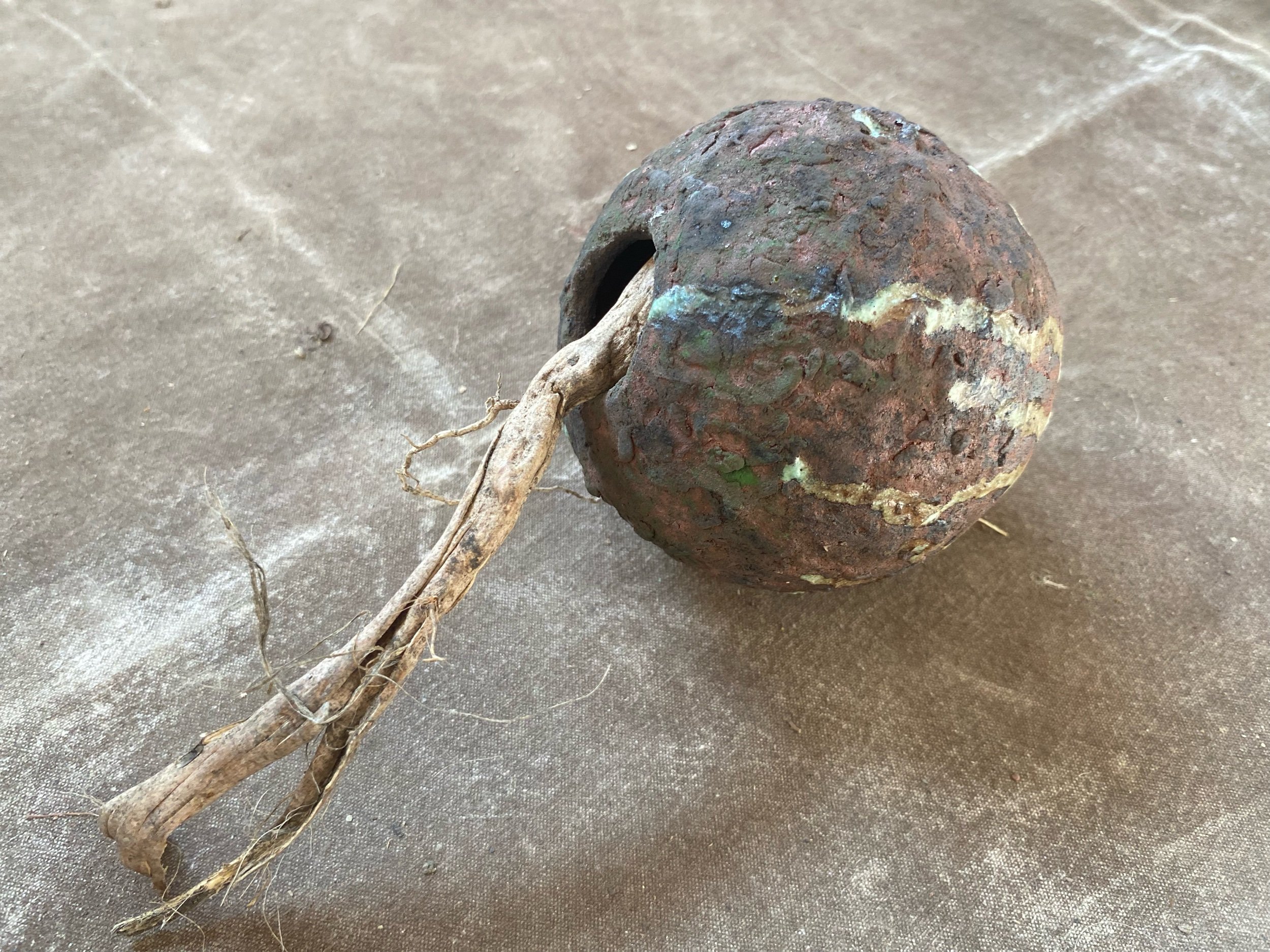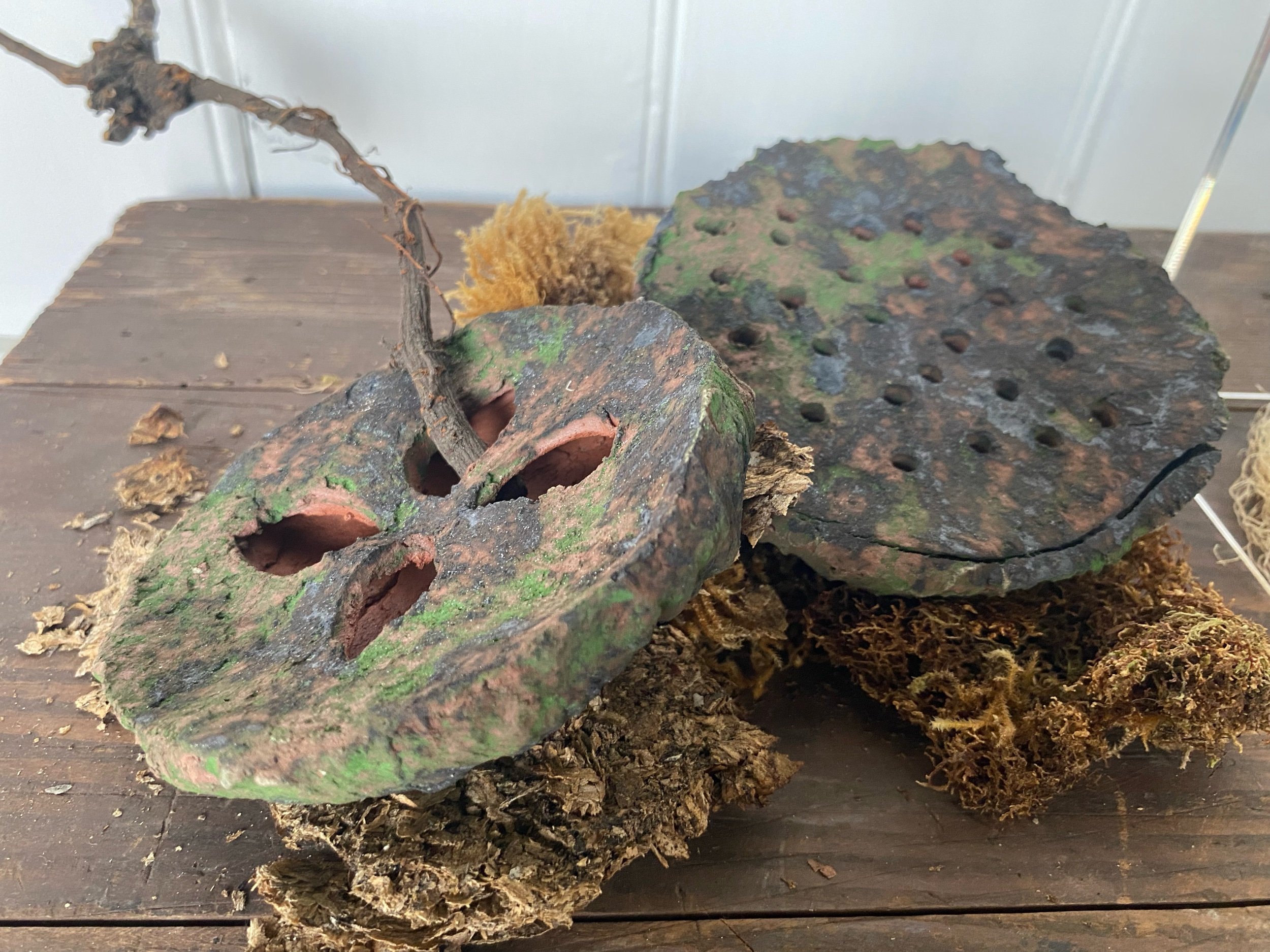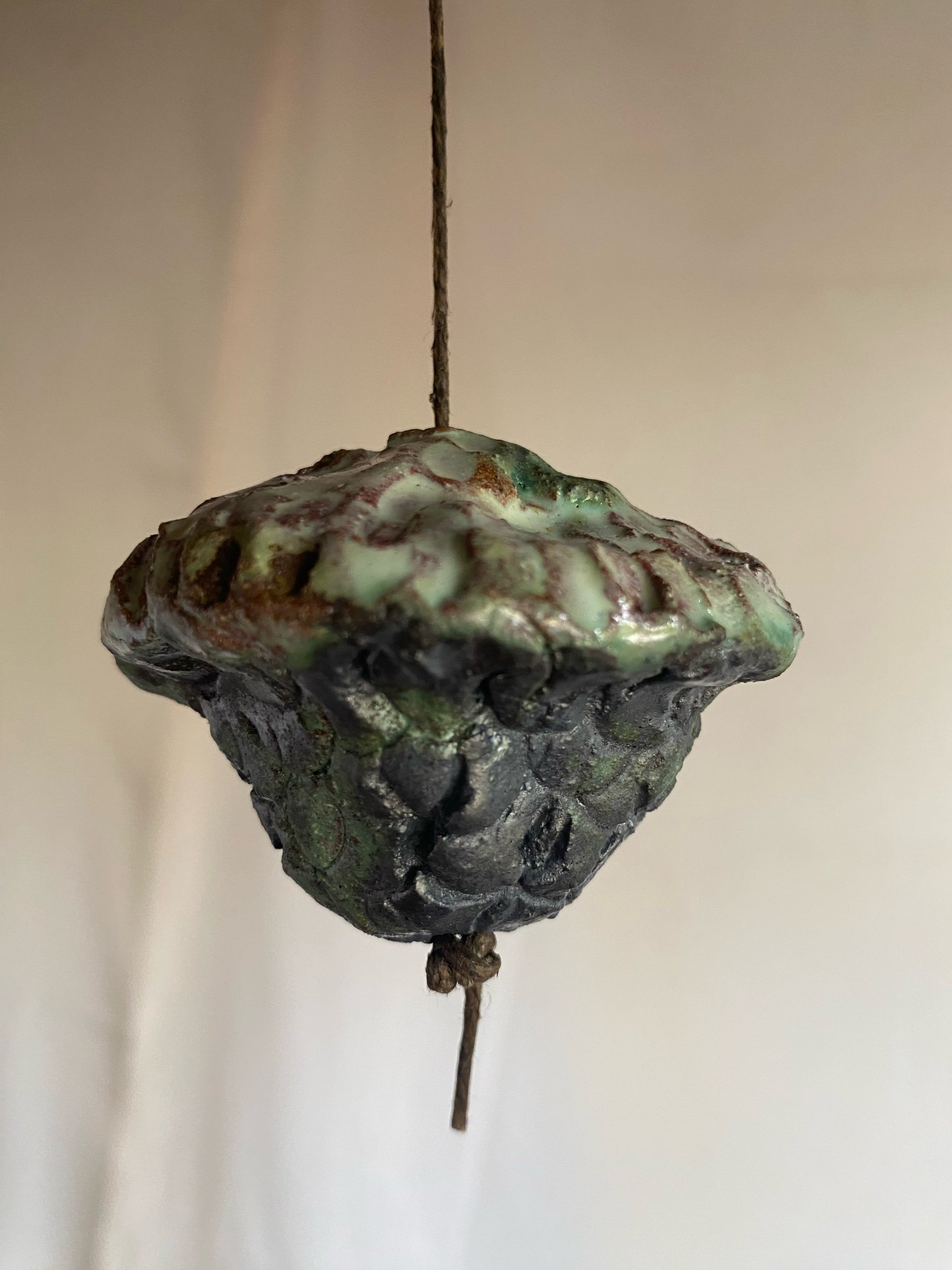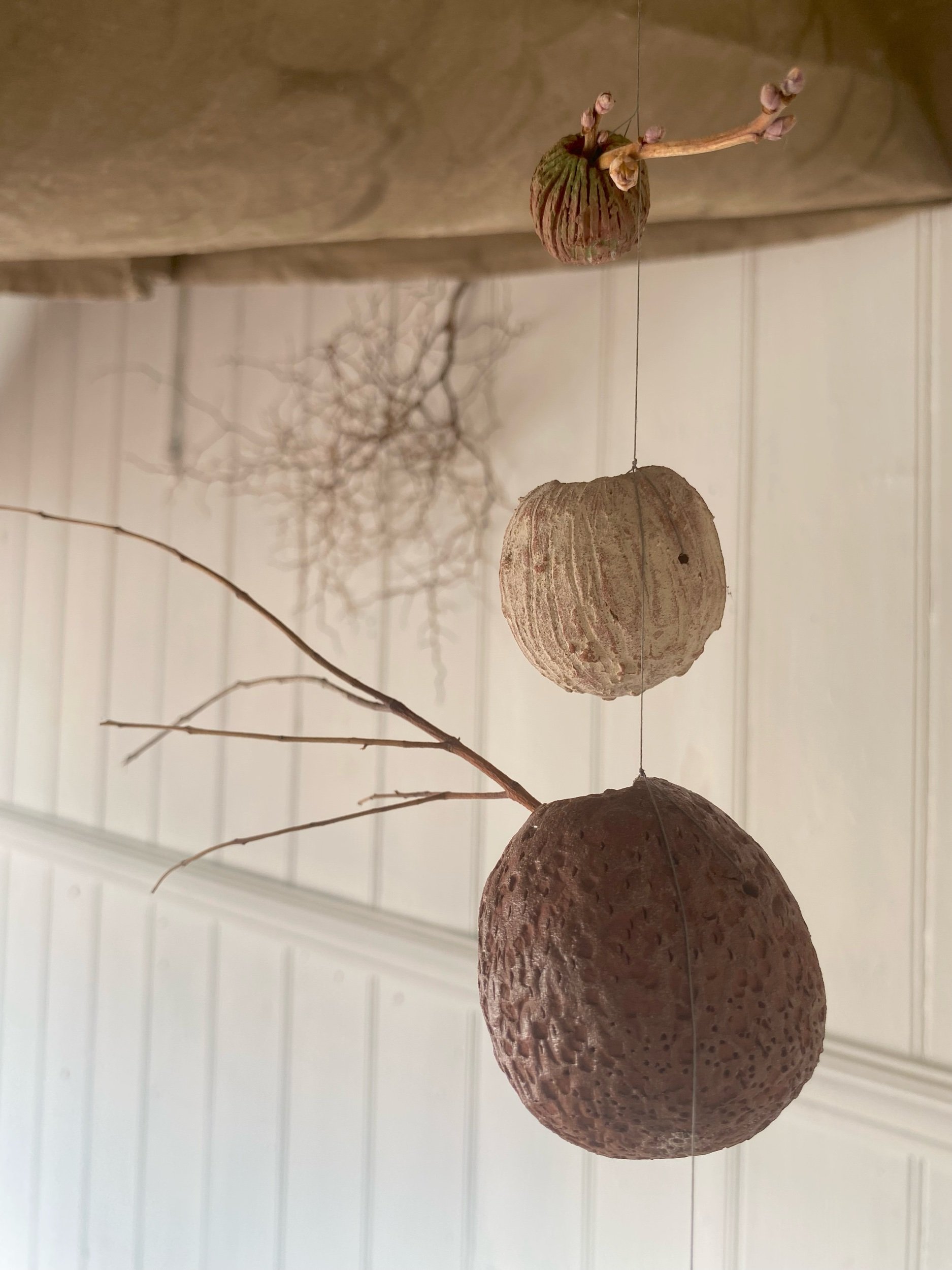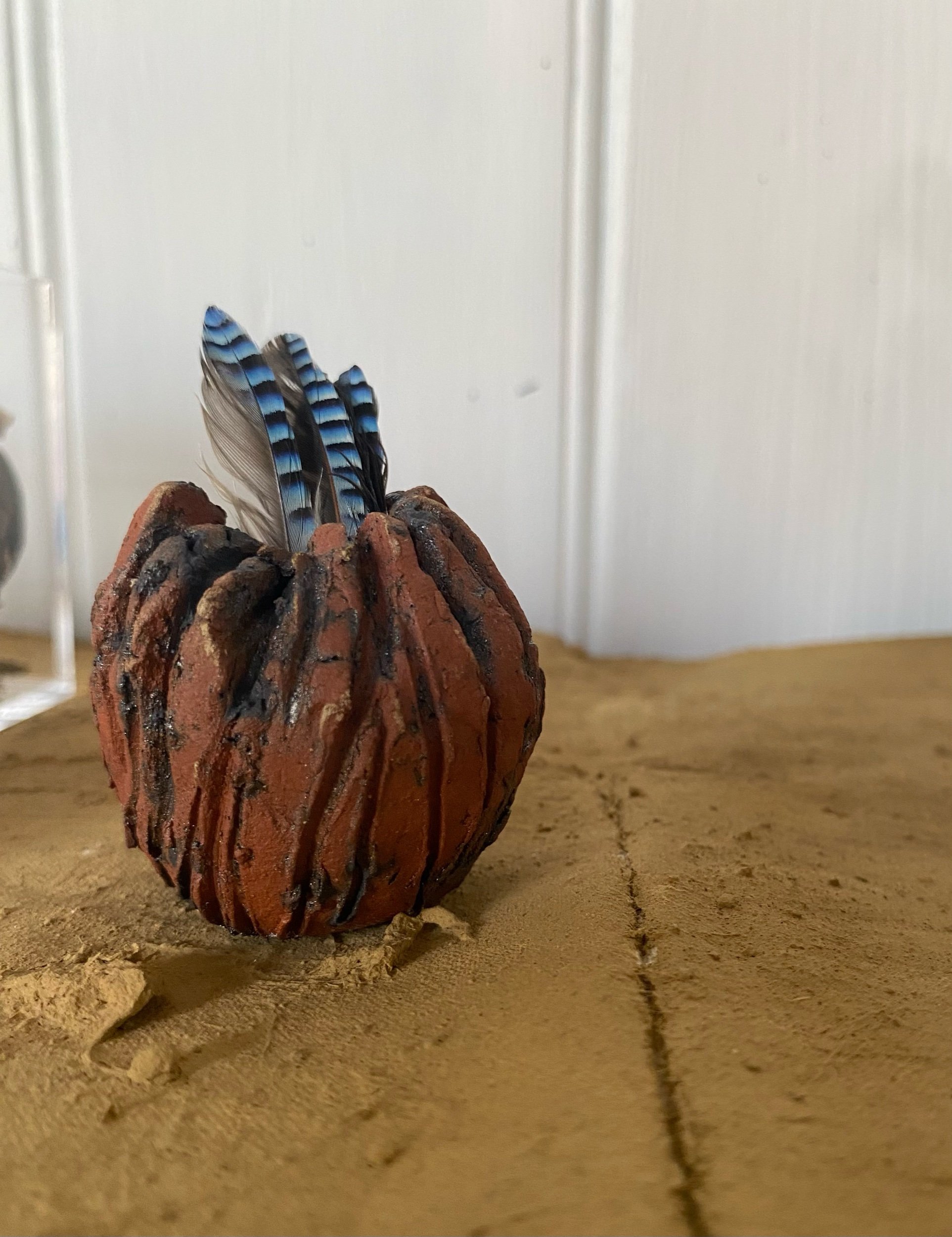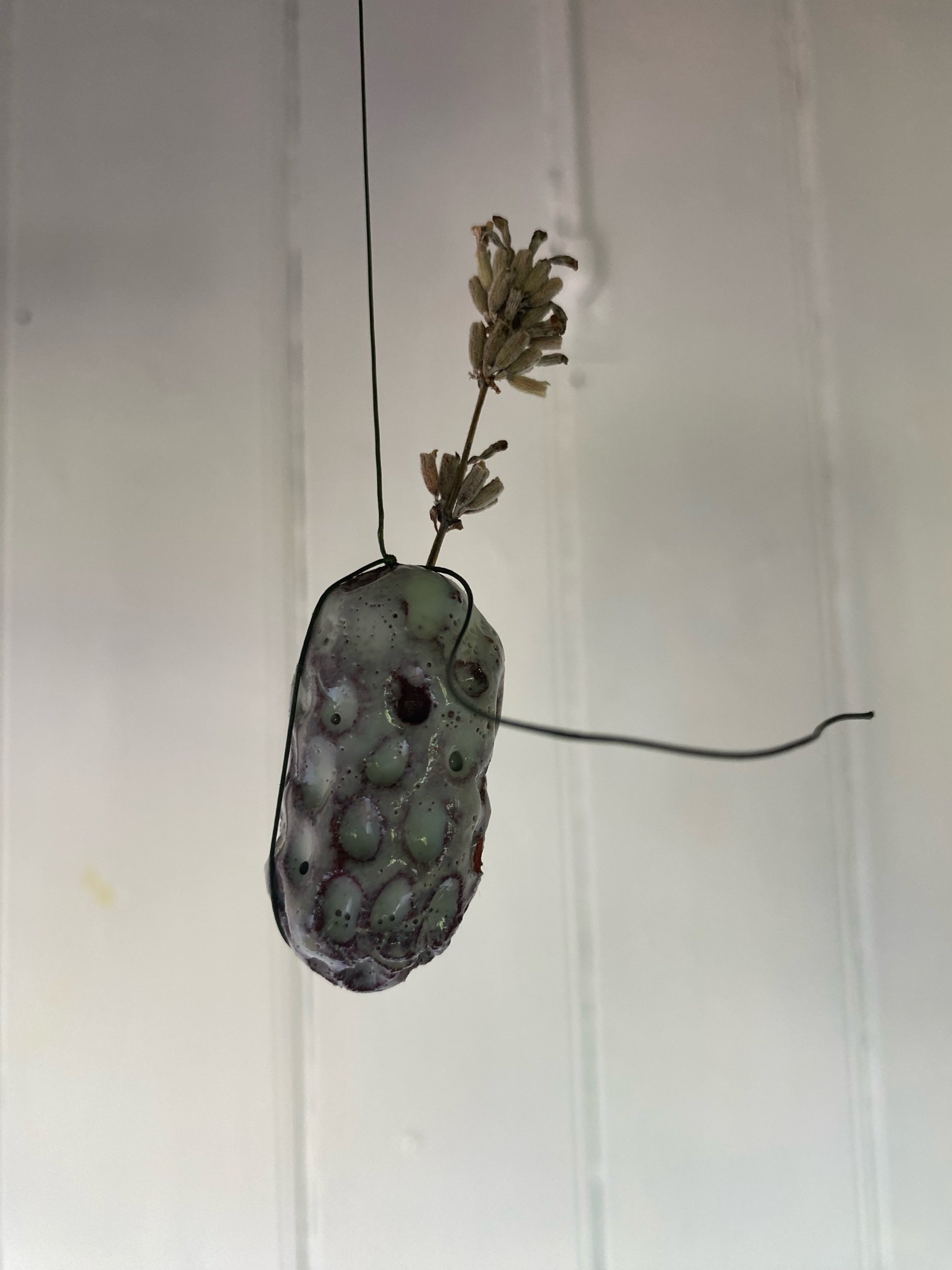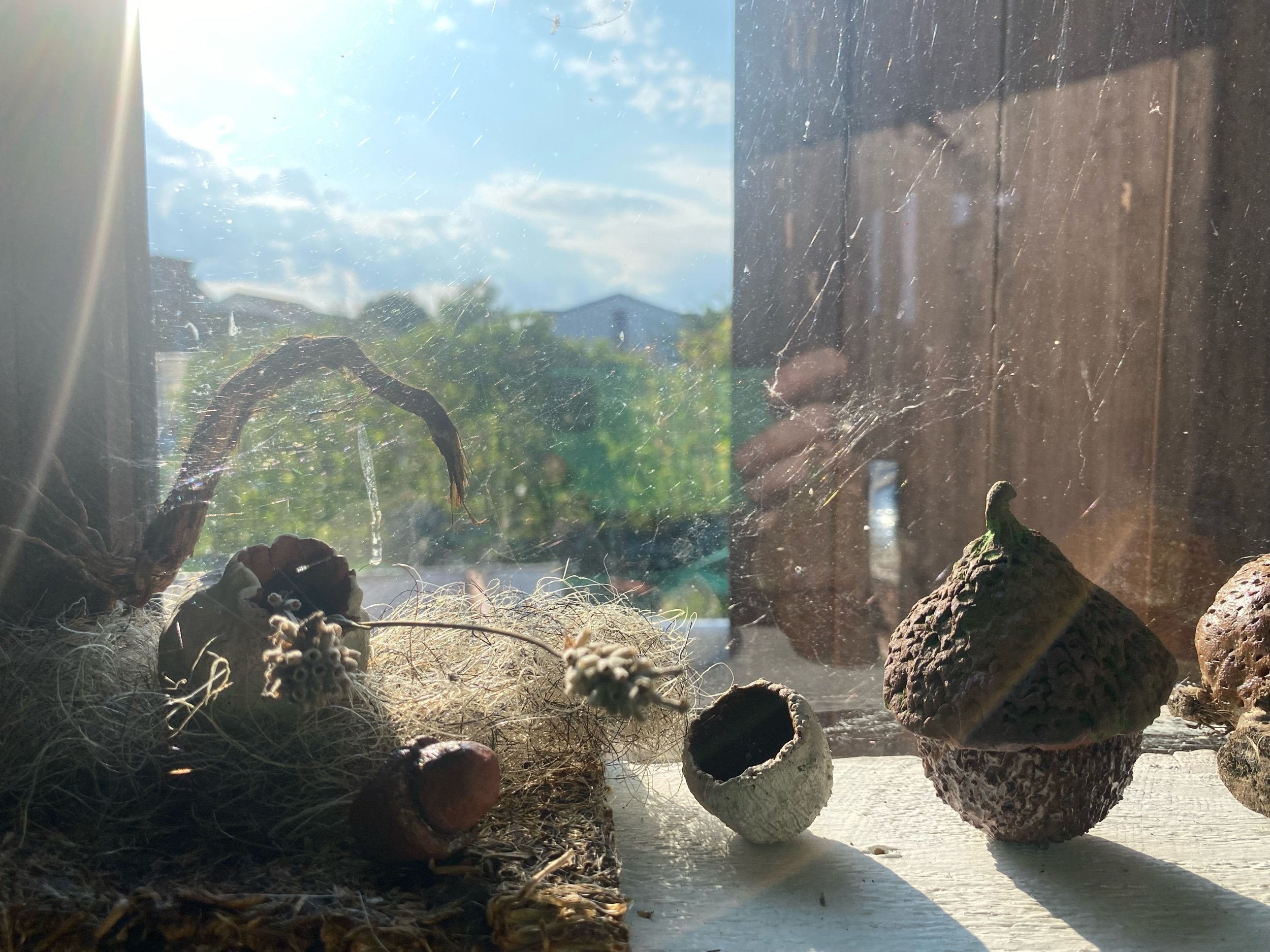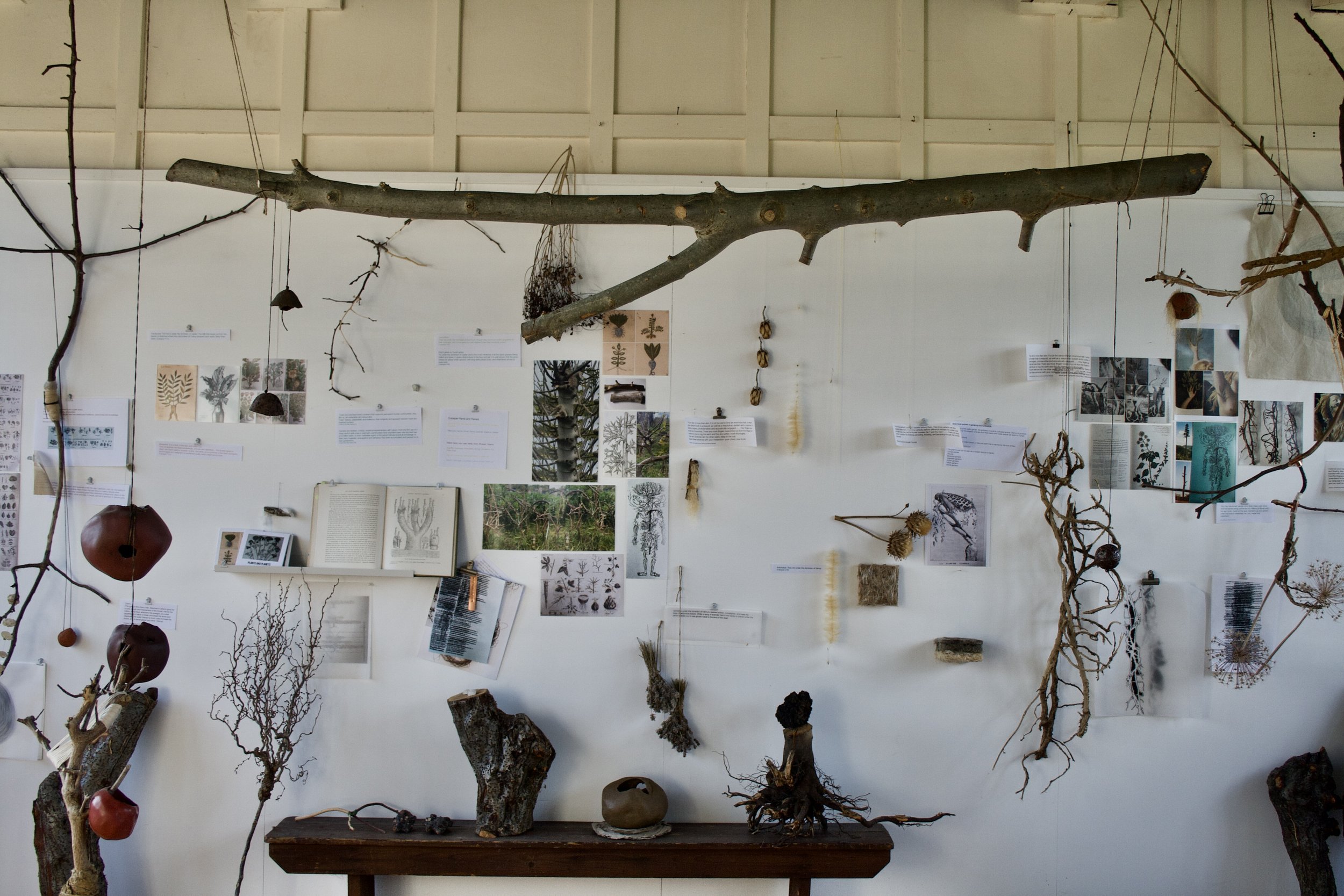Stuart Road Allotment: Residency, Nunhead, London
Stuart Road Allotment Artist in Residence
April - September 2024
This space has held a special place in my heart for over 10 years. It’s inspired several previous works and has provided me with endless material, particularly in the form of soil and London clay.
So to be invited to be the second artist in residence sincerely felt like a gift, to be able to, develop new work and move my studio for 3-4 months. Whilst working with materials from either my own studio or the allotment site itself.
This page will be updated throughout the residency.
Walkways - Paths
Sheds and Small Spaces
Plants - Body - Trees
Taking elements from the allotment vernacular and using those details to incorporate into a style of making and construction.
Joins-knots and binding remain pivotal, taking note of individual approaches and methods from plot holders here on site and also reimagining those traditional gardening methods such as grafting and pruning cuts.
By using what is to hand and re-using materials to create a cyclical nature of working and a visual language that speaks of place and site.
The focus has tipped from the tree itself to the human body and anthropomorphic forms.
Anthropomorphic Plants
1: Four images by Erbario from 15th century illustrated Herbal.
2: Robert Bénard’s drawing of the human arterial system from 1779, the vessels like the capillaries of a leaf or branches of a tree
3: Mandragore,17th century engraving by Abraham Bosse.
4: The Flower Garden, Matthew Darly 1777
The evidence of local London clay on the allotment site and surrounding landscape, has become the foundation for most of the public engagement work, carried out throughout the residency period.
It has been processed from raw clay soil to workable clay.
July 2024 - Work to date in the hut.
‘Despite the fact that living organisms compose a mere one ten -billionth part of the mass of the earth, biodiversity is the most information -rich part of the known universe. More organisation and complexity exist in a handful of soil than on the surfaces of all the other planets combined.’
Biophilia and the Environmental Ethic: Edward O. Wilson
A0 and A1 ink drawings - burnished ceramic pods (fired and unfired) sitting in front of the thinking wall. July 2024
John Gerard’s illustrations from Herbal: The History of plants. First published in 1597. From a Shakespearean Botanical - Margaret Willis
London clay high lighting an high sand content under a shadowing compound microscope. With Melissa Thomas August 2024
‘Kim manages to juxtapose found branches, stalks and husks on-site with illustrations of botanical beauty from artists over the centuries and the binding and constructing of you, the plotholders. Connections are in the eye of the beholder.’
Brendan Maton SRA Secretary August 2024
The method is the same drawing from history, colour, culture and myth.
What is yet to be explored?
Derek Jarman speaks of herbalists Culpeper and John Gerard
And I speak of him.
Derek Jarman - Pharmacopoeia
Text on canvas, dyed in wode.
Final work made from the seed pod workshops by allotment plot holders of all ages September 2024.
Kinship to Land: Canvas burial project undertaken with plot holders to measure soil health and microbe activity. Cotton canvas and calico was given to plot holders to bury on their plot for four weeks and then return them. These pieces will be exhibited at Somerset House Soil: The World at our Feet, in Jan 2025 and the Lethaby Gallery London in Nov 2024.

